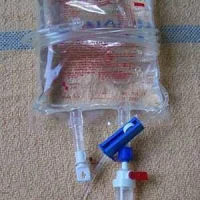Mortality from sepsis remains high, and results of clinical trials have been disappointing. Changing trials design has the potential to improve treatment, according to leading experts in sepsis and acute heart failure. The results of their discussions, which were facilitated by the European Drug Development, are published in the Journal of Intensive Care.
The experts assert that cute heart failure and sepsis have similar characteristics - high mortality, high patient heterogeneity, and wide variation in presentation and standard management, with pathophysiology related to many processes. These challenges make it hard to identify effective therapies. In both, assessing all-cause mortality by itself does not sufficiently characterise the burden of disease, because it omits important aspects of symptoms and functional status.
See Also: Sepsis-3 - Towards Earlier Recognition and Management
In their paper, the experts review why outcomes in sepsis clinical trials have failed to improve, including declining mortality rates, over-estimated treatment effects, and heterogeneity. They suggest approaches to design clinical trials in sepsis, which include matching the treatment to the disease in order to characterise the pathophysiology. They discuss appropriate endpoints for sepsis clinical trials, building on the experiences of acute heart failure trials.
The authors suggest that all-cause mortality is an inappropriate endpoint in sepsis. In acute heart failure trials all-cause mortality is still included as a separate safety measure, but endpoints include those that reflect organ dysfunction and mortality. In sepsis, selecting high-risk patients with clinical phenotypes considered likely to respond to the intervention under study may help to reduce patient heterogeneity within clinical trials and enable signals of benefit to be more readily detected. Cause-specific mortality could be achieved by increasing the “signal” (e.g., enrolling patients with the abnormality targeted by the intervention and excluding patients at low risk of death) and decreasing the “noise” (e.g., excluding patients with competing mortality risks from conditions unrelated to the sepsis episode).
The experts suggest that regulatory agencies consider a composite endpoint for sepsis, where endpoints describing end-organ function, need for mechanical support, or need for other interventions are combined with short-term mortality (ideally sepsis-related mortality if consensus can be reached on a standard definition) as a primary endpoint, with longer-term all-cause mortality assessed for safety. They emphasise that this approach also reflects measures that are known to be important to patients.
In addition they suggest measuring organ dysfunction - "theoretically a more sensitive measure of the effect of an intervention on progression of the sepsis syndrome". They acknowledge that this concept has not yet been validated in trials and consensus on organ dysfunction is needed. Other endpoints that can be used, such as ICU length of stay, days free of mechanical ventilation have issues that make them unsuitable as endpoints, as they are influenced by external factors not related to therapies. The authors also discuss the role of alternative study designs. Their discussions are summarised as 16 priorities for the future.
Priorities for Future Sepsis Clinical Trials
The experts are Alexandre Mebazaa, Pierre François Laterre, James A. Russell, Andreas Bergmann, Luciano Gattinoni, Etienne Gayat, Michael O. Harhay, Oliver Hartmann, Frauke Hein, Anne Louise Kjolbye, Matthieu Legrand, Roger J. Lewis, John C. Marshall, Gernot Marx, Peter Radermacher, Mathias Schroedter, Paul Scigalla, Wendy Gattis Stough, Joachim Struck, Greet Van den Berghe, Mehmet Birhan Yilmaz and Derek C. Angus.
Image credit: Pixabay
The experts assert that cute heart failure and sepsis have similar characteristics - high mortality, high patient heterogeneity, and wide variation in presentation and standard management, with pathophysiology related to many processes. These challenges make it hard to identify effective therapies. In both, assessing all-cause mortality by itself does not sufficiently characterise the burden of disease, because it omits important aspects of symptoms and functional status.
See Also: Sepsis-3 - Towards Earlier Recognition and Management
In their paper, the experts review why outcomes in sepsis clinical trials have failed to improve, including declining mortality rates, over-estimated treatment effects, and heterogeneity. They suggest approaches to design clinical trials in sepsis, which include matching the treatment to the disease in order to characterise the pathophysiology. They discuss appropriate endpoints for sepsis clinical trials, building on the experiences of acute heart failure trials.
Endpoints - Beyond All-Cause-Mortality
The authors suggest that all-cause mortality is an inappropriate endpoint in sepsis. In acute heart failure trials all-cause mortality is still included as a separate safety measure, but endpoints include those that reflect organ dysfunction and mortality. In sepsis, selecting high-risk patients with clinical phenotypes considered likely to respond to the intervention under study may help to reduce patient heterogeneity within clinical trials and enable signals of benefit to be more readily detected. Cause-specific mortality could be achieved by increasing the “signal” (e.g., enrolling patients with the abnormality targeted by the intervention and excluding patients at low risk of death) and decreasing the “noise” (e.g., excluding patients with competing mortality risks from conditions unrelated to the sepsis episode).
The experts suggest that regulatory agencies consider a composite endpoint for sepsis, where endpoints describing end-organ function, need for mechanical support, or need for other interventions are combined with short-term mortality (ideally sepsis-related mortality if consensus can be reached on a standard definition) as a primary endpoint, with longer-term all-cause mortality assessed for safety. They emphasise that this approach also reflects measures that are known to be important to patients.
In addition they suggest measuring organ dysfunction - "theoretically a more sensitive measure of the effect of an intervention on progression of the sepsis syndrome". They acknowledge that this concept has not yet been validated in trials and consensus on organ dysfunction is needed. Other endpoints that can be used, such as ICU length of stay, days free of mechanical ventilation have issues that make them unsuitable as endpoints, as they are influenced by external factors not related to therapies. The authors also discuss the role of alternative study designs. Their discussions are summarised as 16 priorities for the future.
Priorities for Future Sepsis Clinical Trials
- Develop more informative studies using animal models.
- Emphasise study of pathophysiology.
- Identify biomarkers, molecular signals, or genetic markers to identify patients having an underlying causal process that might respond to the specific treatment being studied.
- Develop networks of sepsis investigators experienced in clinical trial conduct.
- Apply the recent Third International Consensus Definitions for Sepsis and Septic Shock when determining eligibility criteria.
- Conduct targeted clinical trials in relatively homogeneous groups of patients with characteristics suggestive of treatment response.
- Consider the addition of pre-specified covariate adjustment of the primary endpoint to address the issue of heterogeneity.
- Exclude low-risk patients if appropriate for the intervention being studied.
- Standardise care to reduce variability and random noise but not to the extent that results are not generalisable.
- Develop realistic expectations for treatment effect and power trials accordingly.
- Apply adaptive designs, especially when key variables are uncertain (e.g., event rates, expected treatment effect).
- Consider targeted primary endpoints with all-cause mortality reserved for safety.
- Develop consensus in the field for standard trial definitions/criteria for interventions if used as endpoints (e.g., vasopressors, mechanical ventilation, renal replacement therapy).
- Collaborate with regulators to modify approach to clinical trial design in this field.
- Develop robust registries to test external validity of the results of trials in broader patient populations.
- Discovery and development of a diagnostic that predicts a higher chance of response to a specific intervention.
The experts are Alexandre Mebazaa, Pierre François Laterre, James A. Russell, Andreas Bergmann, Luciano Gattinoni, Etienne Gayat, Michael O. Harhay, Oliver Hartmann, Frauke Hein, Anne Louise Kjolbye, Matthieu Legrand, Roger J. Lewis, John C. Marshall, Gernot Marx, Peter Radermacher, Mathias Schroedter, Paul Scigalla, Wendy Gattis Stough, Joachim Struck, Greet Van den Berghe, Mehmet Birhan Yilmaz and Derek C. Angus.
Image credit: Pixabay
References:
Mebazaa A, Laterre PF, Russell JA et al. (2016) Designing phase 3 sepsis trials: application of learned experiences from critical care trials in acute heart failure. J Intensive Care, 4:24. doi: 10.1186/s40560-016-0151-6. eCollection 2016.
Latest Articles
sepsis, acute heart failure, clinical trials, endpoints
Mortality from sepsis remains high, and results of clinical trials have been disappointing. Changing the design of trials has the potential to improve treatment, according to leading experts in sepsis and acute heart failure.










